
The Winter Olympic Games, also known as the Winter Olympics, is a major international multi-sport event held once every four years for sports practiced on snow and ice. The first Winter Olympic Games, the 1924 Winter Olympics, were held in Chamonix, France. The modern Olympic Games were inspired by the ancient Olympic Games, which were held in Olympia, Greece, from 776 BCE to 394 CE. The Baron Pierre de Coubertin of France founded the International Olympic Committee (IOC) 1,500 years later in 1894, leading to the first modern Summer Olympic Games in Athens, Greece in 1896. The IOC is the governing body of the Olympic Movement, with the Olympic Charter defining its structure and authority. The original five Winter Olympic Sports were bobsleigh, curling, ice hockey, Nordic skiing, and skating. The Games were held every four years from 1924 to 1936, interrupted in 1940 and 1944 by World War II, and resumed in 1948. Until 1992, the Summer Olympic Games and the Winter Olympic Games were held in the same year. A decision to change this was made in 1986, when during the 91st International Olympic Committee session, IOC members decided to alternate the Summer Olympic Games and the Winter Olympic Games on separate four-year cycles in even-numbered years. Also, at that same congress it was decided that 1992 Winter Olympics would be the last to be held in the same year as the Summer Games and that to change the rotation, the games that would be held in 1996 would be brought forward by two years, being scheduled to 1994. After those games, the next were to be held in 1998 when the four-year Olympic Cycle resumed.

The 1948 Winter Olympics, officially known as the V Olympic Winter Games and commonly known as St. Moritz 1948, were a winter multi-sport event held from 30 January to 8 February 1948 in St. Moritz, Switzerland. The Games were the first to be celebrated after World War II; it had been twelve years since the last Winter Games in 1936.

The 2006 Winter Olympics, officially the XX Olympic Winter Games and also known as Torino 2006, were a winter multi-sport event held from 10 to 26 February in Turin, Italy. This marked the second time Italy had hosted the Winter Olympics, the first being in 1956 in Cortina d'Ampezzo; Italy had also hosted the Summer Olympics in 1960 in Rome.

The 1952 Winter Olympics, officially known as the VI Olympic Winter Games and commonly known as Oslo 1952, were a winter multi-sport event held from 14 to 25 February 1952 in Oslo, the capital of Norway.

The 1960 Winter Olympics were a winter multi-sport event held from February 18 to 28, 1960, at the Squaw Valley Resort in Squaw Valley, California, United States. The resort was chosen to host the Games at the 1956 meeting of the International Olympic Committee (IOC). Squaw Valley was an undeveloped resort in 1955, so the infrastructure and all of the venues were built between 1956 and 1960 at a cost of US$80,000,000. The layout was designed to be intimate, allowing spectators and competitors to reach most of the venues on foot.

The 1956 Winter Olympics, officially known as the VII Olympic Winter Games and commonly known as Cortina d'Ampezzo 1956, were a multi-sport event held in Cortina d'Ampezzo, Italy, from 26 January to 5 February 1956.

The 1964 Winter Olympics, officially known as the IX Olympic Winter Games and commonly known as Innsbruck 1964, were a winter multi-sport event which was celebrated in Innsbruck, Austria, from January 29 to February 9, 1964. The city was already an Olympic candidate, unsuccessfully bidding to host the 1960 Games. Innsbruck won the 1964 Games bid, defeating the cities of Calgary in Canada and Lahti in Finland. The sports venues, many of which were built for the Games, were located within a radius of 20 km (12 mi) around Innsbruck. The Games included 1,091 athletes from 36 nations, which was a record for the Winter Games at the time. Athletes participated in six sports and ten disciplines which bring together a total of thirty-four official events, seven more than the 1960 Winter Olympic Games. The luge made its debut on the Olympic program. Three Asian nations made their Winter Games debut: North Korea, India and Mongolia.
The 1992 Winter Olympics, officially known as the XVI Olympic Winter Games, were a winter multi-sport event held in Albertville, France, from February 8 to 23. A total of 1,801 athletes representing 64 National Olympic Committees (NOCs) participated in 57 events from 12 different sports and disciplines. In a break from tradition, the medals were primarily made of crystal rather than metal: gold, silver, or bronze was used only on the border.
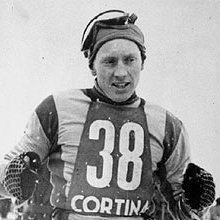
Eugenio Monti was an Italian bobsledder and alpine skier. He is one of the most successful athletes in the history of the bobsleigh, with ten World championship medals and 6 Olympic medals including two golds. He is known also for his acts of sportsmanship during the 1964 Winter Olympics in Innsbruck, Austria, which made him the first athlete ever to receive the Pierre de Coubertin World Trophy.
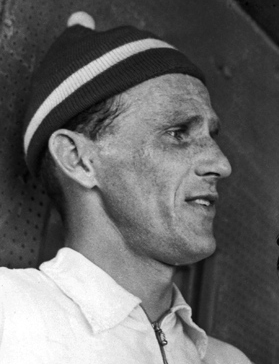
Edy Sixten Jernberg, known as "Sixten", was a Swedish cross-country skier and one of the most successful cross-country skiers of all time. Between 1952 and 1964 he took part in 363 ski races, finishing within the podium in 263 and winning 134 of them; during this period he won four world titles and nine Olympic medals. In 12 starts over three consecutive Winter Games he never finished worse than fifth place, and between 1955 and 1960, he won 86 out of 161 competitions.
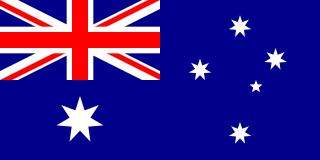
Australia sent a delegation to compete at the 1956 Winter Olympics from the 26 January to 5 February 1956 in Cortina d'Ampezzo, Italy. This was the nation's third appearance at the Winter Olympic Games with their last appearance being in 1952.
At the 1956 Winter Olympics in Cortina d'Ampezzo, Italy, the six alpine skiing events were held from Friday, 27 January to Friday, 3 February.

Bolivia sent a delegation to compete in the Winter Olympic Games for the first time at the 1956 Winter Olympics in Cortina d'Ampezzo, Italy from 26 January to 5 February 1956. The only competitor in the delegation was alpine skier René Farwig. In the men's giant slalom he came in 75th place, and he was disqualified from the men's slalom. It would be 24 years before Bolivia returned to the Winter Olympics, at the 1980 Winter Olympics.
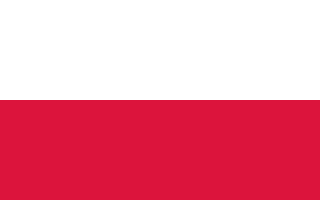
Poland first participated at the Olympic Games in 1924, and has sent athletes to compete in every Summer Olympic Games since then, except for the 1984 Games, when they were forced to be part of the Soviet-led boycott of the 1984 Summer Olympics. Poland has also participated in every Winter Olympic Games.
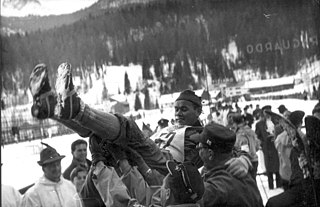
The men's 30 km cross country race at the 1956 Winter Olympics took place on 27 January. It was held at the Snow Stadium, which was about 2 km (1.2 mi) from Cotrina. Fifty-one competitors from eighteen countries participated in the event. Finnish skier Veikko Hakulinen won the event by only 24 seconds over Swede Sixten Jernberg. Hakulinen and Jernberg would switch positions on the podium in the 50 km (31 mi) event. Russian skier Pavel Kolchin won the bronze in the 30 km (19 mi) event and also in the 15 km (9.3 mi) event.
The men's 15 kilometre cross-country race at the 1956 Winter Olympics was held on 30 January. It was held at the Snow Stadium, which was about 2 km (1.2 mi) from Cortina. Sixty-one competitors from twenty countries participated in the event. The Nordic countries of Norway and Sweden took first and second in the form of Hallgeir Brenden of Norway and Sixten Jernberg of Sweden. This was Jernberg's second silver medal of the Games. Soviet skier Pavel Kolchin won his second bronze of the Games.
The men's 50 kilometre cross-country race at the 1956 Winter Olympics took place on 2 February. It was held at the Snow Stadium, which was about 2 km (1.2 mi) from Cotrina. Thirty skiers from thirteen countries participated in the event. The Nordic countries once again dominated the event. In a reversal of the top two results in the 30 km (19 mi) race, Swedish skier Sixten Jernberg won the gold, Fin Veikko Hakulinen took the silver and Russian Fedor Terentjev won the bronze. Jernberg would go on to win a bronze in the relay event giving him a full complement of gold, silver and bronze. Hakulinen would win a silver in the relay event giving him a gold and two silver medals for the Olympics.

The 2026 Winter Olympics, officially the XXV Olympic Winter Games and also known as Milano-Cortina 2026, is an upcoming international multi-sport event scheduled to take place from 6 to 22 February 2026 in three regions, with the Italian cities of Milan and Cortina d'Ampezzo as main hosts.

The 2018 Winter Olympics, officially known as the XXIII Olympic Winter Games, were a winter multi-sport event held in Pyeongchang County, South Korea, from 9 to 25 February, with preliminary events in some sports beginning on 8 February. A total of 2,833 athletes representing 92 National Olympic Committees (NOCs) participated. The games featured 102 events in 15 sports, making it the first Winter Olympics to surpass 100 medal events. Four new disciplines in existing sports were introduced to the Winter Olympic Games program in Pyeongchang: big air snowboarding, mixed doubles curling, mass start speed skating, and mixed team alpine skiing.
















